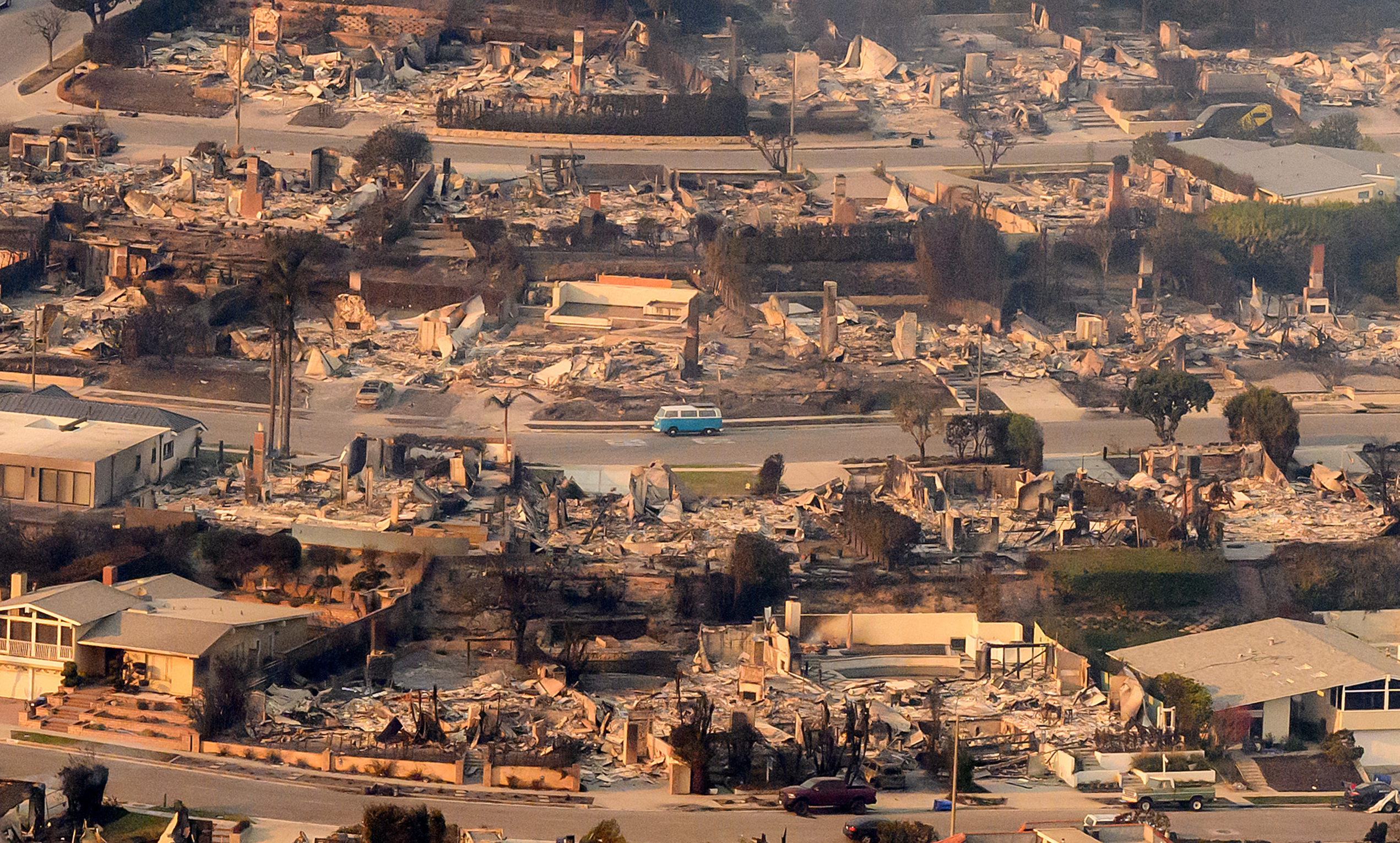Victims of Los Angeles’s most destructive fire have sued the city’s Department of Water and Power, alleging that mismanaged water supplies hindered firefighting efforts during the catastrophic Palisades blaze. As investigations unfold, the case highlights critical questions about infrastructure resilience amid escalating climate challenges.
LA Water Department Sued Over Wildfire Response

Key Takeaways:
- Victims are suing LADWP over alleged water mismanagement during the Palisades fire.
- The Palisades fire is LA’s most destructive, killing at least eight and burning 23,700 acres.
- Plaintiffs claim the empty Santa Ynez Reservoir hindered firefighting efforts.
- LADWP asserts water pressure loss was due to extreme demand, not mismanagement.
- Governor Newsom has ordered an investigation into water supply issues during the fire.
Victims File Lawsuit Against LADWP
More than a dozen victims of the catastrophic Palisades fire have filed a lawsuit against the Los Angeles Department of Water and Power (LADWP). The plaintiffs accuse the public utility of failing to manage water supplies, alleging that this mismanagement hampered firefighters’ ability to combat the deadly blaze.
The Devastating Impact of the Palisades Fire
The Palisades fire, the most destructive blaze in Los Angeles history, has killed at least eight people, burned 23,700 acres, and devastated the affluent Pacific Palisades neighborhood. The California Department of Forestry and Fire Protection reported the extensive damage as firefighters continue to battle the inferno, which was only 18 percent contained as of Tuesday night.
Allegations of Mismanagement and Empty Reservoirs
Central to the lawsuit is the claim that LADWP failed to maintain water levels in the nearby Santa Ynez Reservoir, which has a capacity of up to 117 million gallons. According to the suit, the reservoir had been empty since February 2024. Plaintiffs allege that the utility delayed repair work on the reservoir cover to cut costs, rendering it unusable during a critical time.
“The water supply system servicing Pacific Palisades failed miserably, leaving residents and firefighters with little to no water to fight the blaze,” said attorney Roger Behle, who represents one of the plaintiffs. He added, “LADWP made the conscious decision not to timely repair the Santa Ynez Reservoir cover, leaving the reservoir drained and unusable, all as a ‘cost-saving’ measure.”
Behle emphasized the potential impact of the empty reservoir, stating to the Daily Journal , “Some say 110 million gallons in the Santa Ynez Reservoir wouldn’t have saved everything, but if it saved even one house or reduced damage to 10 houses, that water should have been there.”
LADWP’s Response to the Accusations
In a statement released before the lawsuit was filed, LADWP defended its actions, asserting that the water supply had “remained strong” during the fire. The utility acknowledged that water pressure in the system was lost but attributed it to “unprecedented and extreme water demand to fight the wildfire without aerial support.”
LADWP explained that the loss of water pressure impacted its ability to refill three water tanks supplying the area, affecting “a low percentage of hydrants in the area, mostly in the higher elevations.” The utility stated, “As soon as LADWP identified the risk of losing water in the tanks and water pressure in the system, we immediately deployed potable water tankers to sustain support for firefighting efforts.”
Regarding the empty Santa Ynez Reservoir, LADWP cited regulatory requirements, saying the reservoir was taken “out of service to meet safe drinking water regulations.” The utility noted that commissioning repairs is subject to the city charter’s competitive bidding process, which requires additional time.
Government Investigations Underway
California Governor Gavin Newsom has announced an investigation into reports that firefighters struggled with insufficient water supply and pressure during the Palisades fire. In a letter dated January 10 to LADWP and LA County Public Works leadership, Newsom stated, “I have directed state water and firefighting officials to prepare an independent after-incident report examining the causes of lost water supply and water pressure in municipal water systems during the fire events, and to identify measures that local governments can implement to provide adequate water supply for emergency response during future catastrophic events.”
The Bureau of Alcohol, Tobacco, Firearms and Explosives is also investigating the fire’s cause. Simultaneously, multiple lawsuits were filed against Southern California Edison over the alleged role the company’s equipment played in igniting the Eaton fire near Pasadena.
Looking Ahead: Infrastructure and Climate Resilience
As wildfires grow increasingly severe due to climate change, the resilience of critical infrastructure like water supply systems is under scrutiny. LADWP acknowledged the challenges ahead, stating, “As we face the impacts of climate change and build climate resilience, we welcome a review and update of these codes and requirements if city water systems will be used to fight extreme wildfires. LADWP is initiating our own investigation about water resiliency and how we can enhance our posture to respond to the impacts of climate change.”
Conclusion
The legal actions and investigations stemming from the Palisades fire highlight urgent concerns about preparedness and infrastructure in the face of natural disasters. As victims seek accountability, the situation underscores the essential role of proactive resource management and the need for robust systems capable of withstanding the growing threats posed by climate change.











